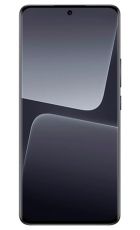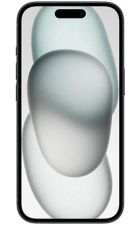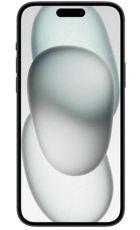Some 4K features have started seeping into smartphones already and other features will likely be added to many more smartphones in the near future.
Whether you’re not sure what 4K is, are wondering what 4K features you can get now or want to know what the future holds you’ve come to the right place. Read on for everything you need to know about 4K smartphones.
What is 4K?
4K is a resolution and refers to a display device or content with a horizontal resolution of around 4000 pixels, though the standard accepted 4K resolution as defined by Digital Cinema Initiatives is 4096 x 2160.
In practice though that’s mostly the resolution used in cinemas and a number of things get labelled as 4K, including devices and content which don’t quite have 4000 pixels across either axis. On smartphones and most other consumer devices the standard 4K resolution is 3840 x 2160.
4K screens
Currently no smartphones have a 4K screen, though they’re well on the way, having pushed through 720p, to 1080p and on to QHD (1440 x 2560) in the last few years.
In fact it’s recently been rumoured that the ZTE Star 3 will have a 3840 x 2560 4K display, making it the first 4K phone to become commercially available. The handset is said to have a 5.5-inch screen, which would translate to a pixel density of 808 pixels per inch, a massive jump on the already super-sharp 538ppi LG G4.
At the moment that’s just a rumour and even if it is real it may not launch in the UK, but other 4K phones are likely to arrive soon.
We’d wager that both Samsung and LG will try and have one on the market within the next couple of years and Sharp has already created a 4K smartphone screen which it expects will be used in phones in 2016.
Do we need 4K screens?
That’s a very good question. The benefit of 4K screens is that they’re sharper than any smartphone displays around at the moment, but it reaches a point where the human eye can’t tell the difference and arguably that point has already been reached.
Apple reckons that 326 pixels per inch is the point at which the human eye can no longer make out individual pixels. That’s why it calls its screens Retina displays.
The fact that QHD handsets are noticeably sharper to many users suggests Apple is wrong, but even at the upper end most experts suggest that around 600ppi is the cut-off, which would mean the likes of the Samsung Galaxy S6 and LG G4 are very close and a 4K screen would be complete overkill.
A higher resolution also means more processing power is needed and that in turn can take a hit on the battery life of a phone, so there may be no need for 4K screens on smartphones.
Having said that they could come in handy on phablets, especially as they continue to get larger and certainly a 4K screen could be beneficial on a tablet. 4K screens could also come in handy with any VR devices which incorporate a smartphone, such as the Samsung Gear VR, as they require your phone to be far closer to your eyes than you would typically have it.
So 4K screens may have a future on smartphones and even if they don’t prove visibly superior to QHD ones they’re likely to start appearing in an attempt to differentiate new flagships from other phones.
4K video recording
While 4K smartphone screens haven’t quite arrived some phones do let you record video in 4K. The Samsung Galaxy S6, Samsung Galaxy S6 Edge, Samsung Galaxy Note 4, Samsung Galaxy Note Edge, LG G4, LG G3, Sony Xperia Z3+, Sony Xperia Z3, Sony Xperia Z2, Sony Xperia Z3 Compact and Google Nexus 6 can all shoot in 4K for example.
Some others don’t ship with 4K cameras but support apps which enable 4K footage. The iPhone 6 and iPhone 6 Plus for example can be upgraded to 4K with the help of a third party app. Of course as none of these phones have 4K screens you can’t view the footage in 4K quality on them, which is where 4K video output comes in.
4K video output
Thankfully it’s increasingly easy to view content from your phone on an external display, which means that even though your current smartphone won’t have a 4K screen you can potentially get 4K footage on to one.
Of course this requires you to have a 4K screen and even on televisions and monitors that’s a fairly pricey proposition, but it’s at least an option.
The next challenge then is outputting your phone’s content in 4K quality, as many methods don’t support 4K. Google’s popular Chromecast dongle for example doesn’t, though dongles with 4K support are expected to arrive soon.
In the meantime the simplest solution is to use an MHL 3.0 adapter, as this is a common way of connecting smartphones to a larger screen and the 3.0 version supports 4K quality. It’s not wireless but it will get the job done.
Beyond 4K
4K is good but screens are moving on all the time and already there’s such a thing as 8K. That delivers a resolution of 7680 x 4320, for 33 million pixels in total, up from 8 million with 4K and just 2 million with 1080p.
Don’t expect to see an 8K screen on your next smartphone, as if 4K is pushing the limits of what’s actually beneficial 8K would shatter them on a 5 or 6-inch screen.
We will start seeing 8K televisions though and already there’s an 8K video on YouTube, though good luck finding something powerful enough to play it, let alone output it in full quality.
As for smartphones, 4K may well be the highest resolution we ever see on them, but that’s not to say there won’t be further improvements made to their screens. Colour accuracy, richness, viewing angles and more could all be improved and then of course there’s whole other technologies which could be implemented, like 3D and even holograms.






